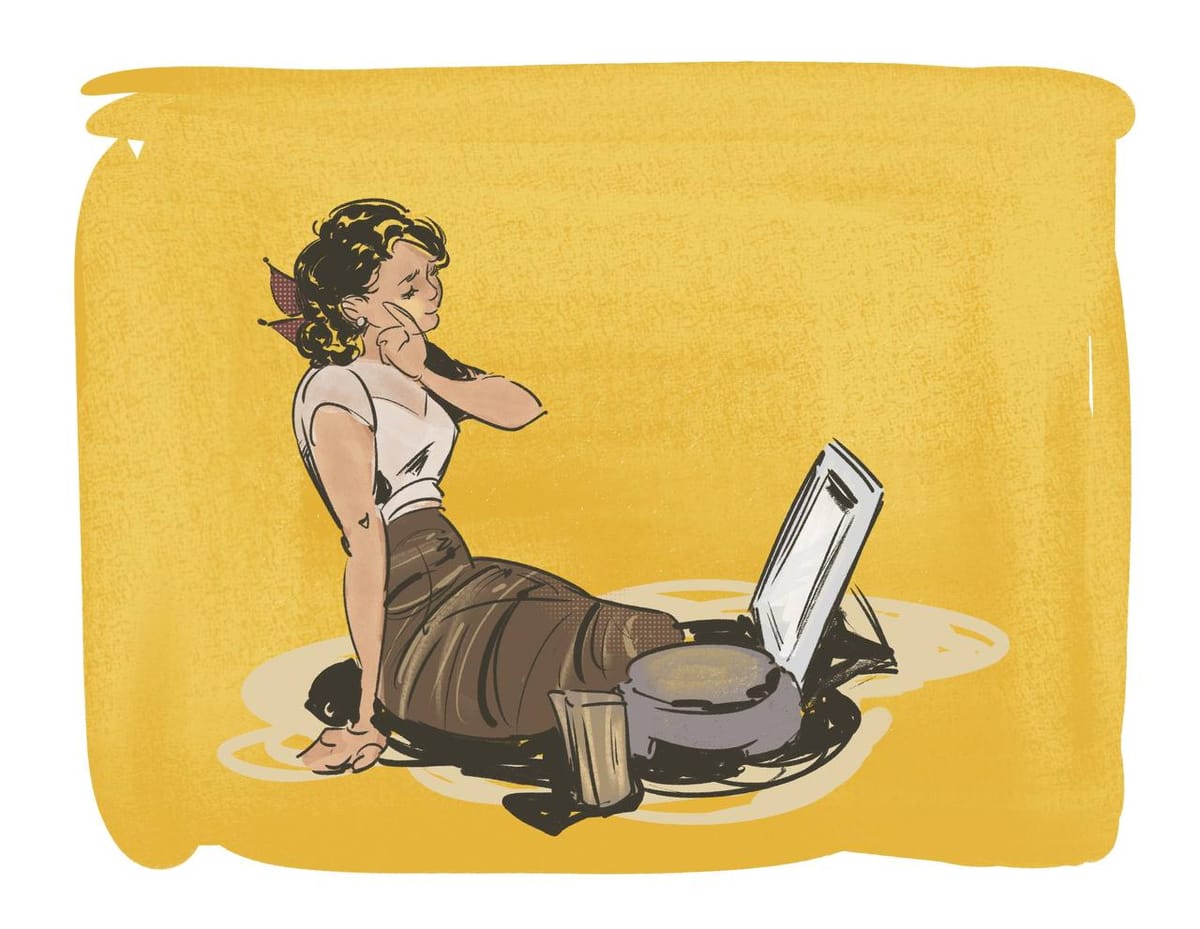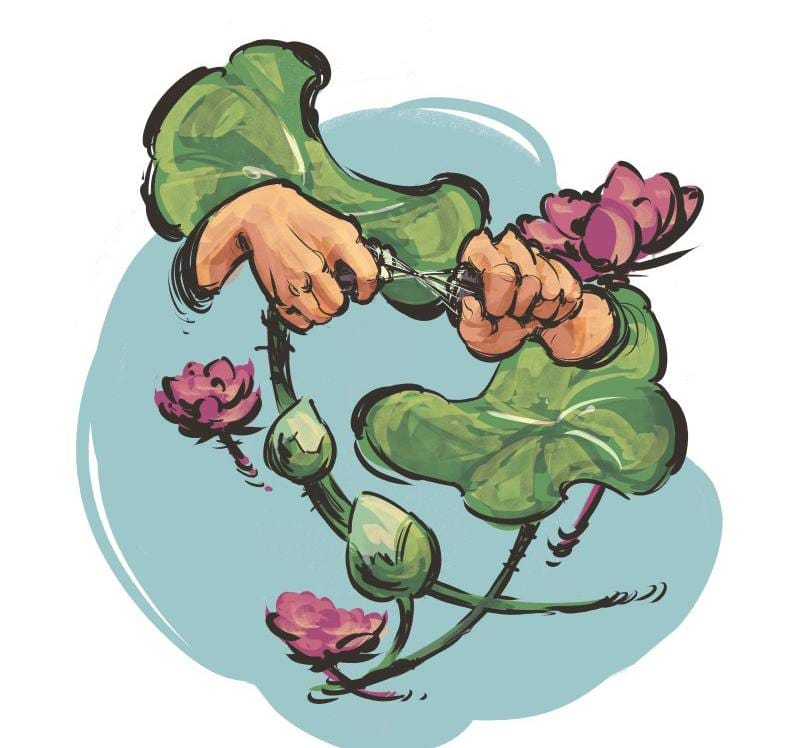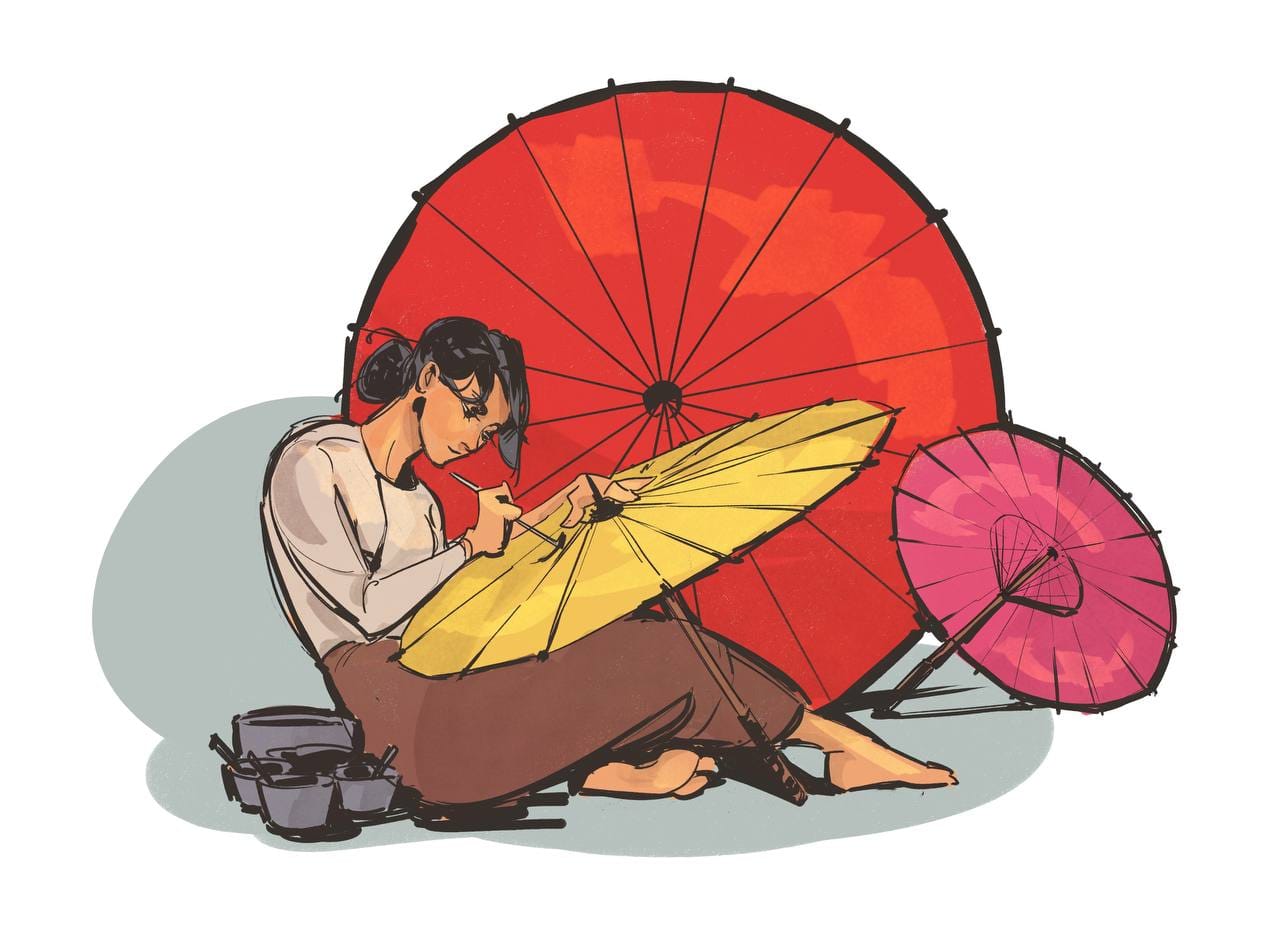
"Taking Shwebo thanakha to Yangon for use, no matter how dark the skin, it becomes fair and smooth" - these lyrics from Nandawshay Saya Tin's song about Yangon beautifully describe Shwebo thanakha, which is not only the best product of the Sagaing region but could also be considered one of Myanmar's finest exports.
Thanakha from the Shwebo area grows in red gravel soil, making it fine-grained, compact, with a reddish hue and good adherence. It also has a distinctively pleasant fragrance. Similarly, the Shin Ma Taung thanakha from the Pakokku area is famous as the thanakha used by the Vesali princess. The town of Ayardaw is so full of thanakha plantations that it's even referred to as the thanakha capital.
However, the future of Myanmar's thanakha, which is so deeply intertwined with Myanmar's culture and traditions, now faces uncertainties. What are the problems?
Main Issues
The first problem is the emergence of thanakha-based products from Thailand. Around 2017, Thailand started producing cosmetic products based on thanakha. While they initially imported raw thanakha from Myanmar, they have now started growing thanakha trees within Thailand.
The second issue is that Thailand is trying to register the scientific name of thanakha species (Hesperethusa Crenulata) with the ASEAN Cosmetic Association. From there, they aim to list it in either the World Plant List or the International Nomenclature Cosmetic Ingredient (INCI) Name. If thanakha gets an INCI Name, it would essentially become their native plant. The INCI Name is crucial for global trade registration. Without it, a product cannot be traded or exported. INCI gives registration rights to cosmetic plant species with precise scientific evidence and proof.
If Thailand manages to register thanakha in the INCI Name, the whole world will buy thanakha from them. These are the steps Thailand is taking.
Difficult Situation to Counter
Myanmar faces a challenge in countering Thailand's moves. The problem is that in the Myanmar dictionary, the species name for thanakha is listed as Limonia Acidissima, not Hesperethusa Crenulata. Due to the weakness in correcting this misclassification, Myanmar is finding it difficult to object to Thailand's proposal.
Another issue is that in the Thai language, the sound "thanakha" means "to apply on the face." In Myanmar, "thanakha" derives from the word "sanakha." "Sana" means impure or inferior, and "kha" means to remove. Thus, "sanakha" means removing impurities. Later, "sanakha" evolved into "thanakha."
Similarly, while Myanmar has historically spelled thanakha as "Thanakha" in English, the Thai spell it as "Thanaka." Now, if you search for thanakha in English, from Wikipedia to other sources, you'll find it spelled the Thai way - "Thanaka."
This is a significant blow to Myanmar and Myanmar's thanakha. It's worth considering whether something that originated and grew in Myanmar for years is now being adopted and credited to others.
Thanakha and Myanmar Culture
In reality, thanakha is Myanmar's own heritage. The practice of grinding thanakha bark on a flat stone and applying the resulting paste on the face is unique to Myanmar. Seeing the thanakha design between the cheeks immediately identifies someone as Myanmar.
Experts believe that Myanmar people have been using thanakha since the Pyu era, about 2000 years ago. However, the earliest evidence is found in the Bagan era, from the 11th century AD. Wall paintings in the Gubyaukgyi, Nagayon, and Apayaratana temples in Bagan depict young women and flat stones. In literature, the earliest reference is in the Thonteiktin poem of Razadiraz, written in 1383 AD during the Inwa era. The poem mentions, "When thanakha is ground on a stone slab and mixed with cool drinking water, it spreads like sandalwood."
Later, in the Buridat Zat Paunggyoe written by Shin Maha Ratthasara in 1493 AD, there are references to court ladies applying thanakha. In the museum of Shwemawdaw Pagoda in Bago, there's a flat stone labeled "Dhatukallaya." These all indicate that Myanmar people have been using thanakha for generations.
Myanmar people use thanakha not only for beauty and medicinal purposes but also in religious ceremonies.
However, after the military coup, the fate of thanakha has been overshadowed by the loss of lives, homes, and property. The thanakha market and cultivation are on the brink of collapse due to the raging conflicts in the main thanakha-producing regions.
In fact, even before the coup, the situation of the Myanmar thanakha market wasn't particularly good.
The influx of thanakha products from Thailand, made with chemical processes without natural thanakha raw materials but with thanakha fragrance, along with the decline in the tradition of applying thanakha, has affected thanakha cultivation. This is because thanakha is a perennial plant, taking time and requiring high maintenance costs. As a result, fast-growing and more profitable crops like jute have started replacing thanakha.
While Myanmar's thanakha industry is struggling, Thailand's thanakha initiatives are gaining momentum. Although Thailand hasn't obtained the INCI Name yet, if they do, the thanakha market will essentially belong to Thailand.
UNESCO Registration
For Myanmar to get ahead, thanakha needs to be registered with UNESCO. Then, it also needs to obtain an INCI Name. If this happens, thanakha will belong to Myanmar.
In that case, Myanmar's thanakha cultivation could see a revival. With these hopes, Myanmar submitted thanakha to UNESCO for registration as an intangible cultural heritage on March 30, 2020.
However, at the 16th session of the Intergovernmental Committee for the Safeguarding of the Intangible Cultural Heritage held on December 18, 2021, it was decided that Myanmar's submission regarding thanakha lacked sufficient data and evidence, making it unsuitable for intangible cultural heritage status at that time.
Will Thanakha Become Thai Property?
If Thailand obtains the INCI Name at this point, Myanmar will lose its claim on thanakha. Losing thanakha means losing cultural heritage and historical value.
Although Thailand doesn't have the cultural tradition of grinding thanakha on a flat stone and applying it like Myanmar, they have started claiming that they use thanakha in dried form, as powder for skincare, body spa, and scrubs. While Thailand says it's not interested in UNESCO's intangible cultural heritage, if they obtain the INCI Name and dominate the market, people will start associating thanakha with Thailand.
The Songkran festival, which is similar to Myanmar's Thingyan in terms of era and celebration style, has already been registered as UNESCO intangible cultural heritage, leaving Myanmar behind. This time, we don't want to be left behind with thanakha. However, in today's situation where even lives and homes are uncertain, the future of thanakha hangs by a thread.
Nu Thit Moe (Y3A)
Read More:
 Build Myanmar - MediaY3A
Build Myanmar - MediaY3A
 Build Myanmar - MediaY3A
Build Myanmar - MediaY3A
Build Myanmar-Media : Insights | Empowering Myanmar Youth, Culture, and Innovation
Build Myanmar-Media Insights brings you in-depth articles that cover the intersection of Myanmar’s rich culture, youth empowerment, and the latest developments in technology and business.
Sign up for Build Myanmar - Media
Myanmar's leading Media Brand focusing on rebuilding Myanmar. We cover emerging tech, youth development and market insights.
No spam. Unsubscribe anytime.
Sign up now to get the latest insights directly to your mailbox from the Myanmar's No.1 Tech and Business media source.
📅 New content every week, featuring stories that connect Myanmar’s heritage with its future.
📰 Explore more:
- Website: https://www.buildmyanmarmedia.com/
- Facebook: https://www.facebook.com/buildmyanmar
- YouTube: https://youtube.com/@buildmyanmarmedia
- Telegram: https://t.me/+6_0G6CLwrwMwZTIx
- Inquiry: info@buildmyanmar.org
#BuildMyanmarNews #DailyNewsMyanmar #MyanmarUpdates #MyanmarNews #BuildMyanmarMedia #MyanmarNews #GlobalNews #TechNewsMyanmar #BusinessNewsMyanmar #Updates #Insights #Media
